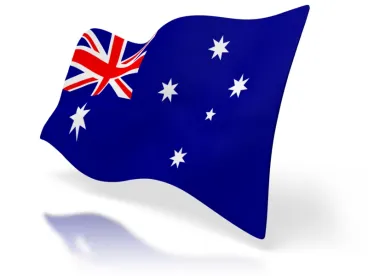Australia’s goal to decrease its carbon dioxide (CO2) emissions by 26-28% by 2030 is a direct result of the Paris Climate Conference in 2015. This commitment will be partially executed through the existing Emissions Reduction Fund (ERF). The ERF is a voluntary scheme introduced by the Australian Government (Government) that incentivises individuals and businesses to adopt practices that reduce CO2 emissions. There are three aspects to the ERF, namely, crediting, purchasing and safeguarding the decrease of emissions.
The ERF Safeguard Mechanism (Safeguard Mechanism), which comes into effect on 1 July 2016, intends to accelerate Australia’s commitment to reduce CO2 emissions by 2030. The Safeguard Mechanism overview, a factsheet released by the Government, outlines the specifics of this initiative ahead of its implementation.
The Safeguard Mechanism intends to prevent CO2 emissions reductions from the ERF being displaced by a substantial increase in emissions throughout other parts of the economy. The Safeguard Mechanism aims to encourage organisations to keep CO2 emissions within historical levels. The Safeguard Mechanism will operate under the legislative framework of the National Greenhouse and Energy Reporting Act 2007 (Cth) (NGERA), as well as related laws, and administered by the Clean Energy Regulator (Regulator).
The Safeguard Mechanism applies to facilities producing emissions exceeding 100,000 tonnes of ‘CO2 equivalence’ annually. If a facility is covered under the Safeguard Mechanism, an emissions baseline (Baseline) will be established by the Regulator, which cannot be surpassed. A Baseline is essentially a reference point against which future CO2 emissions will be measured. Baselines are ascertained differently, depending on factors such as:
-
Whether the designated facility is new or has been operating for some time;
-
The amount of historical data the facility has reported under the NGERA; and
-
The form of facility which is subject to the Safeguard Mechanism.
Notably, there will be special rules for facilities in the electricity industry with respect to Baselines.
Liability for compliance with the Safeguard Mechanism lies with the ‘responsible emitter’ (Emitter), who is responsible for running the covered facility. ‘Responsible emitter’ is a new phrase introduced under the NGERA, which will be defined as the person having ‘operational control’ of the facility on or after 1 July 2016. It is likely that persons who already have obligations under the NGERA will be considered Emitters for the purposes of the Safeguard Mechanism. The Emitter must ensure that the facility’s emissions remain at or below the Baseline during any financial year. The Emitter may be an individual, company, trust, business entity or a governing body (for example, a local council).
If an Emitter does not adhere with its obligations under the Safeguard Mechanism, the Regulator may impose a range of discretionary penalties in order to warrant compliance. Enforcement options available include:
-
Issuing of infringement notices;
-
Accepting enforceable undertakings;
-
Seeking injunctions to halt the operation of facilities where emissions exceedance occurs; and
-
In extreme cases, a court imposed civil penalty on people or entities who violate obligations pursuant to the Safeguard Mechanism.
There are also other measures, punitive and otherwise, that the Government will implement to ensure Emitters comply with their relevant Safeguard Mechanism obligations. For instance:
-
Emitters will be able to use carbon credit units (an arrangement under the existing ERF), to offset CO2 emissions exceeding the Baseline;
-
Monitoring of CO2 emissions over several years will give Emitters the flexibility to surpass the Baseline in a period without consequences, provided that average emissions over two or three years adhere to the Baseline; and
-
An exemption may available for designated facilities , where CO2 emissions are the direct result of extraordinary situations e.g. natural disasters or criminal activity.
Detailed rules governing the Safeguard Mechanism are outlined in the National Greenhouse and Energy Reporting (Safeguard Mechanism) Rule 2015 (Cth), which, in particular, elucidates how Baselines will be established for relevant facilities. The Safeguard Mechanism is expected to affect around 50% of Australia’s emissions across a broad range of industries including mining, manufacturing, electricity generation, oil and gas, construction, transport and waste.
The Government intends to review the effectiveness of the Safeguard Mechanism, as well as the operation of the ERF more broadly, during 2017 and 2018.




 />i
/>i
